The Silver Bullet for Bicycle Safety
What has the power to improve traffic flow, drive up property values, reduce the number of crashes, and increase the number of cyclists?
Any community serious about reducing crashes, decreasing congestion and boasting the economy should consider adding protected bike lanes. In study after study, protected bike lanes have been proven to not only increase the number of people who ride bicycles, they have also decreased the overall crash rates for everyone using the road, improved the flow of traffic and boosted the local economy with increases in property values and retail sales.
Even for a bicycle advocate, that seems a pretty bold statement, but a recent comprehensive traffic and economic study of the 30 miles of protected bike lanes installed in New York City backs up every claim. That study had the following conclusions:
- Crashes with injuries have been reduced by 17%
- Pedestrian injuries are down by 22%
- Cyclist injuries show a minor decrease even as bicycle volumes have dramatically increased
- Total injuries have dropped by 20%
- 75% decrease in average risk of a serious injury to cyclists from 2001 to 2013
- Cyclist injury risk has generally decreased on protected bicycle lane corridors within this study as cyclist volumes rise and cyclist injures decrease
Mobility
- Travel speeds in the Central Business District have remained steady as protected bicycle lanes are added to the roadway network
- Travel times on Columbus Avenue have improved while vehicle volumes are maintained
- First Avenue travel speeds remained level through project area
- Travel times on 8th Avenue improved by an average of 14%
Economic Vitality & Quality of Life
- When compared to similar corridors streets that received a protected bicycle lane saw a greater increase in retail sales
- 110 trees have been added to projects within this study area, enhancing the neighborhood through which they run
- Crossing distances along corridors have been shortened anywhere between 17’ and 30’
It seems counter-intuitive, but in almost every case, when motor vehicle lanes were removed to create the room needed for protected bike lanes , the flow of traffic improved! Using GPS data from cabs from before and after the streets went on road diets to install the protected bike lanes, New York DOT was able to see that travel speeds actually increased.

The lane pattern on 9th Avenue with the protected bike lane. Fewer lanes for motor vehicles resulted in a 43% reduction in crashes with injuries, a 47% increase in retail sales with no increase in traffic congestion.
But New York City isn’t the only place to get such a massive return on their investment in protected bike lanes. Pretty much every place protected bike lanes are installed, those communities get the same results. Below is a similar traffic analysis of the two-way protected bike lanes installed on 15th Street in Washington, D.C. :
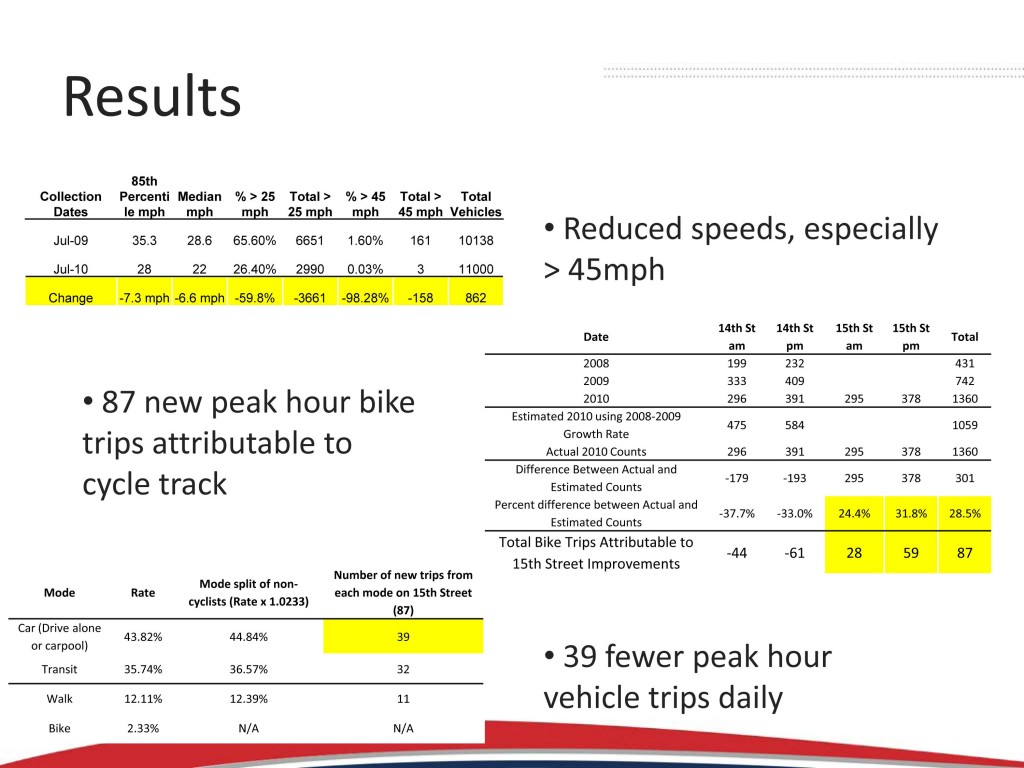
In this study, the 85th percentile traffic speeds (the measure traffic engineers use to compare overall speeds on roads) did decrease after the protected lanes were, but down to a speed consistent with the posted limit.
There are more protected bike lanes in D.C. and all of them have similar effects increasing the number of people who ride, improving traffic safety resulting in a hugely positive return on investment. Chicago has done similar studies of their protected bike lanes with similar results, but beyond the traffic reasons to install protected lanes, there are the social and economic reasons. The prime motivation for the Mayor of Chicago to install cycletracks is to attract and retain a talented workforce. He knows Chicago is competing for talent against places like New York City, Washington, D.C., Seattle and other youth magnate metro areas.
Below are two videos I made of the protected bike lanes in Washington, D.C. and Chicago, along with a video of a protected bike lane in Seattle from the Seattle Bike Blog. If you have problems, try refreshing your screen. Click on the video image, press play and wait.
Chicago Mayor Rahm Emanuel announced the protected bike lanes in Chicago were going to lure jobs and talented workers from Seattle. Below you can read some of his bold statements from the original press conference December 17th:
“I am pleased that the City of Chicago is leading the country with the most protected bike lanes of any city in the country, and we are not resting until we get to that hundred miles. The great cities of the Pacific Northwest no longer have a free ride as the top bicycling cities in the United States. It is not an accident that, where we put our first protected bike lane is also where we have the most concentration of digital companies and digital employees. Every time you speak to entrepreneurs and people in the start-up economy and high-tech industry, one of the key things they talk about in recruiting workers is, can they have more bike lanes.”
“Two facts in the last year, coincidence? I think not: One, the City of Chicago moved from 10th to 5th of most bicycle friendly cities in the country in one year. No other city has moved up that far, that fast, that quickly… In that same year, Chicago moved up from 15th to 10th word-wide in new start-up economy. No other city has moved that far, that fast, that quickly. You cannot be for a start-up, high-tech economy and not be pro-bike, the two go hand in hand. So when my staff gave me this headline from a magazine in Portland, I couldn’t help but smile. The headline read ‘We talk in Portland, they do in Chicago.’ The Seattle Bike Blog wrote, ‘Seattle can’t wait. We are now in the position of being envious of bike lanes in Chicago.’
“I want them to be envious because I expect to not only take all their bikers, but I’ll take their jobs that come with this, all he economic growth that comes with this and the opportunities that comes with this.”
Given adding protected bike lanes makes for great headlines for elected officials, makes streets safer for everyone and boasts the local economy, we should be installing them wherever we can in our cities in Wisconsin. Madison had the nation’s first protected bike lane on University Avenue, but has not installed another one since, despite adding lots of other innovative bicycle facilities and trails. Milwaukee’s raised bike lane on Bay Street was installed in 2011, but the city has not installed a protected bike lane since.
Don’t get me wrong, as I mentioned, many cities in Wisconsin are making positive strides adding bike lanes, bike parking corrals, and even bike sharing systems, but we seem stalled on what might be the single most important improvement we can make to get more people riding. In tough economic times like these, some might argue we can’t afford niceties like protected bike lanes, but given the study results, I would argue the opposite is true. If we want to compete with other cities for jobs, boast retail sales, increase property values and reduce crashes and congestion, we simply can’t afford not to start building protected bike lanes.
This article was originally published by the Bicycle Federation of Wisconsin.
Bike Czar
-
Join a Bike Ride Under the Polish Moon
 Jun 1st, 2018 by Dave Schlabowske
Jun 1st, 2018 by Dave Schlabowske
-
9 Reasons to Join National Bike Challenge
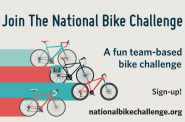 May 4th, 2018 by Dave Schlabowske
May 4th, 2018 by Dave Schlabowske
-
Biking Through the Mindoro Cut
 Apr 27th, 2018 by Dave Schlabowske
Apr 27th, 2018 by Dave Schlabowske


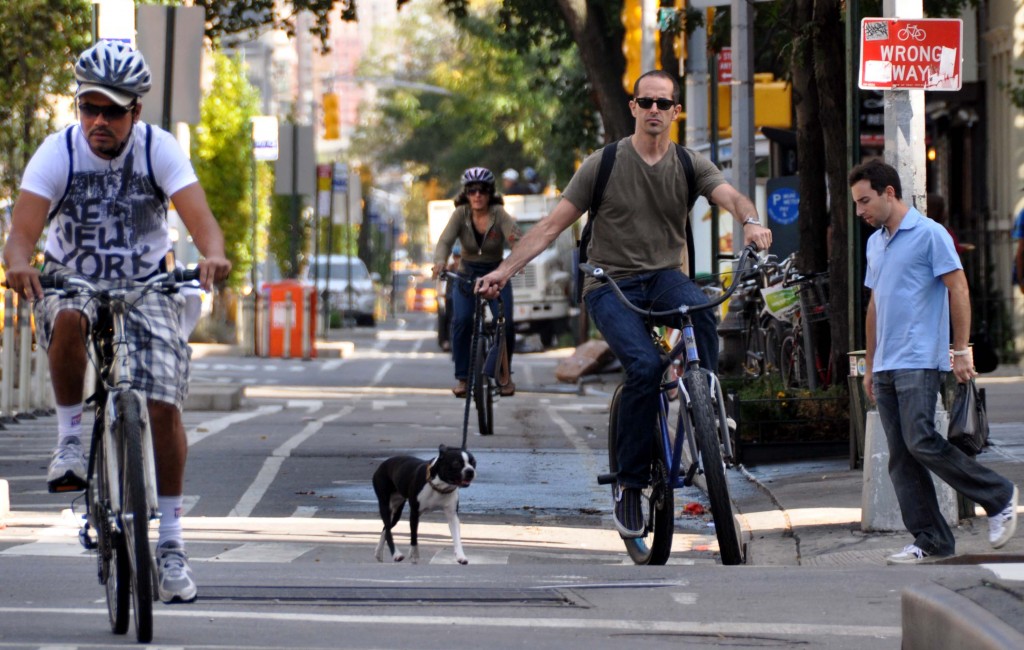

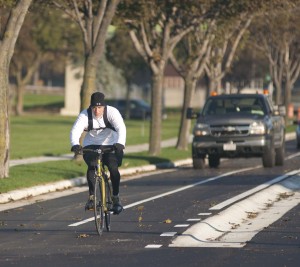


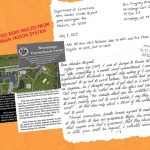

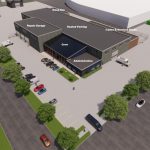














Unfortunate that they opted for a non-protected lane when they redid Farwell the other day. These bollard-separated protected lanes would have been a nice addition http://wisconsinbikefed.org/wp-content/uploads/2011/10/Kinzie-Bike-Lane-CDOT.jpg.
What’s the point of creating bicycle lanes? They still ride on the sidewalk anyway.
What happens during the winter? Are the protected lanes plowed?
Bikes need to be taxed to pay for these wonderful things.
Shoes are not taxed to pay for sidewalks.
Yup, they are plowed or broomed. It works just fine in Chicago and New York where they get plenty of snow.
Protected lanes require additional space on the road for the buffer zone that Farwell does not have. Although the design is not approved, I believe we could move traditional bike lanes to the other side of parked cars since the doors on the passenger side open far less frequently, but ideally you have that buffer area between the parked car and the bike lane for the door to open. Removing parking on Farwell would be a non-starter.
Some people ride on the sidewalk because they are afraid to ride in the street, even with bike lanes. Bike lanes dramatically reduce sidewalk riding, but they don’t eliminate it. Protected lanes virtually eliminate sidewalk riding.
I am all for more cycling but constantly remind everyone that the number one problem at emergency rooms is bike injuries. I used to work in emergency rooms at St. Joes and my daughter has been at several. More biking, and this trend to minimize the dangers, will add to that. why hasn’t anyone commented on the Sheboygan program with a federal grant. Not much happened despite spending a million dollars, ridership on bikes actually went down. Riding on some of these streets is damn dangerous. I ride almost every day and avoid them all the time.
I see little in all of these entries about maximizing safety by obeying laws, not running stop signs, wear bright clothing, use those strobe lights etc. I have lost 4 friends in last few years. You collide with car, you lose. Watch choke points they are the most dangerous. It is irresponsible to talk about all of these neat things without making sure that people know what they are doing.
It would be nice to have protected lanes but have not seen that trend. Love to see more bike paths except over the lake.
Safety for bike riders and pedestrians improved drastically in Sheboygan. Isn’t that important? And are bike injuries seriously the number one problem in area emergency rooms? That is extremely difficult to believe.
Protected lanes are being considered by the City of Milwaukee. But as noted above in one of the comments, adding the buffer/protection requires more space, something that was not available on Farwell or S. KK Avenue, etc. that were recently repaved. You can’t just flip flop the existing parking and bike lanes on most streets and have enough room to install the protection, allow for door swing from the passenger side of parked cars, and also maintain them without very small equipment. Protected lanes, where installed, need to be maintained year round since people are bicycling year round, which would require a different approach to snow plowing and street sweeping.
Dave, all other benefits aside, you talk about how protected bike lanes are somehow supposed to improve the flow of automobile traffic as well? I’ve seen nothing to back that up that claim.